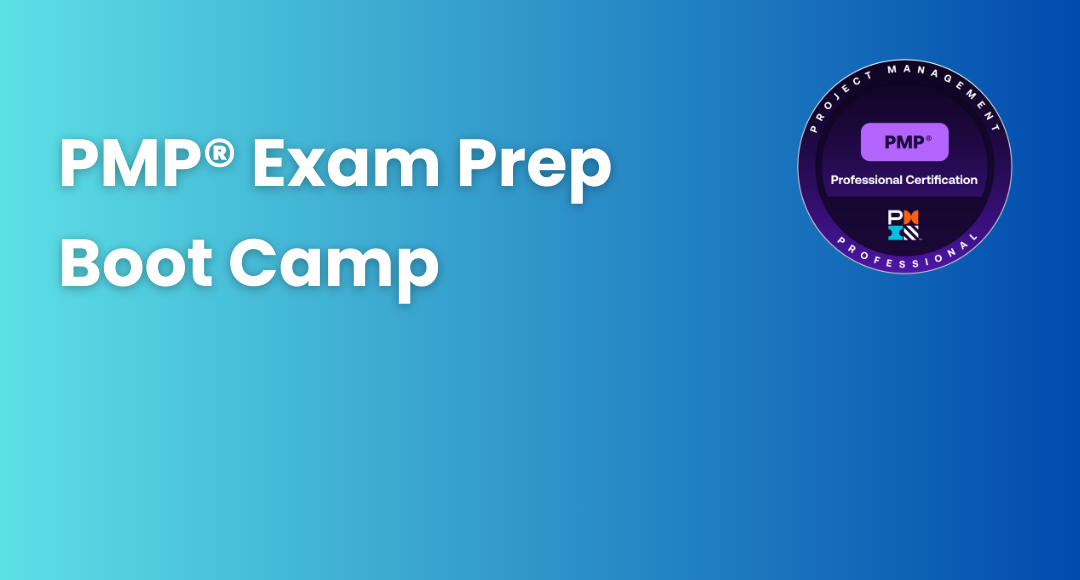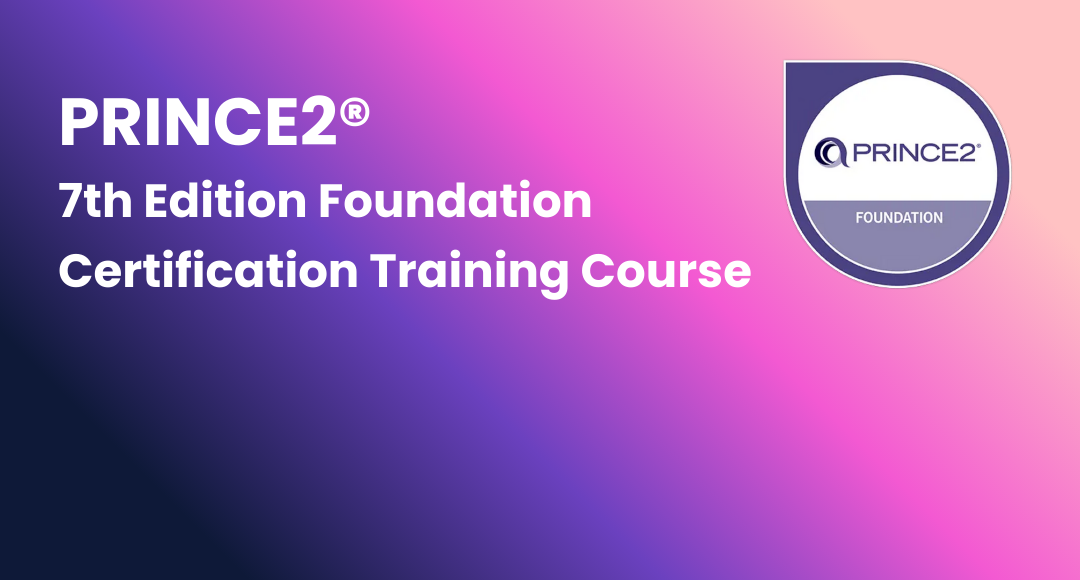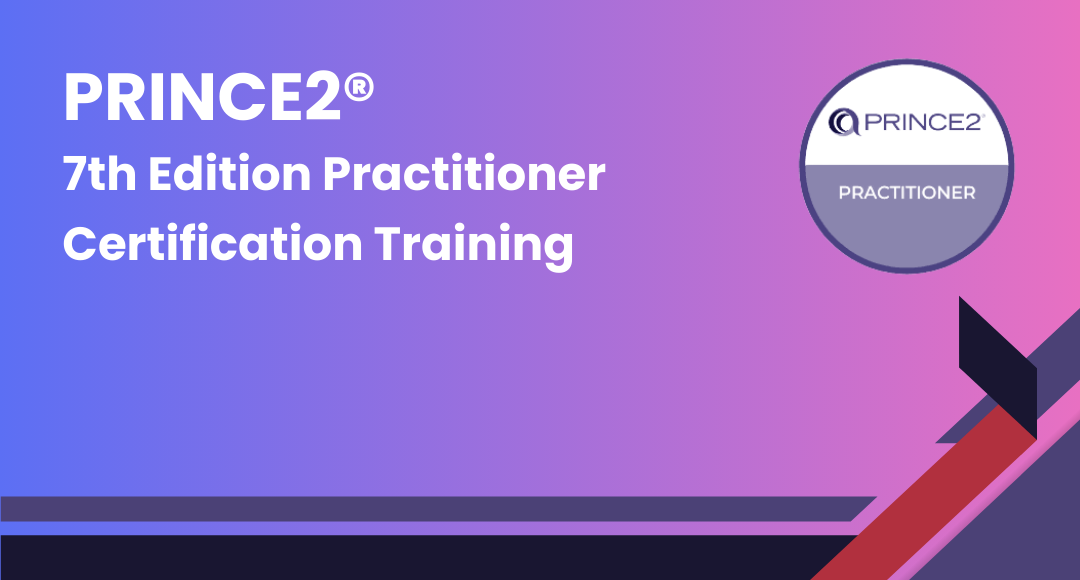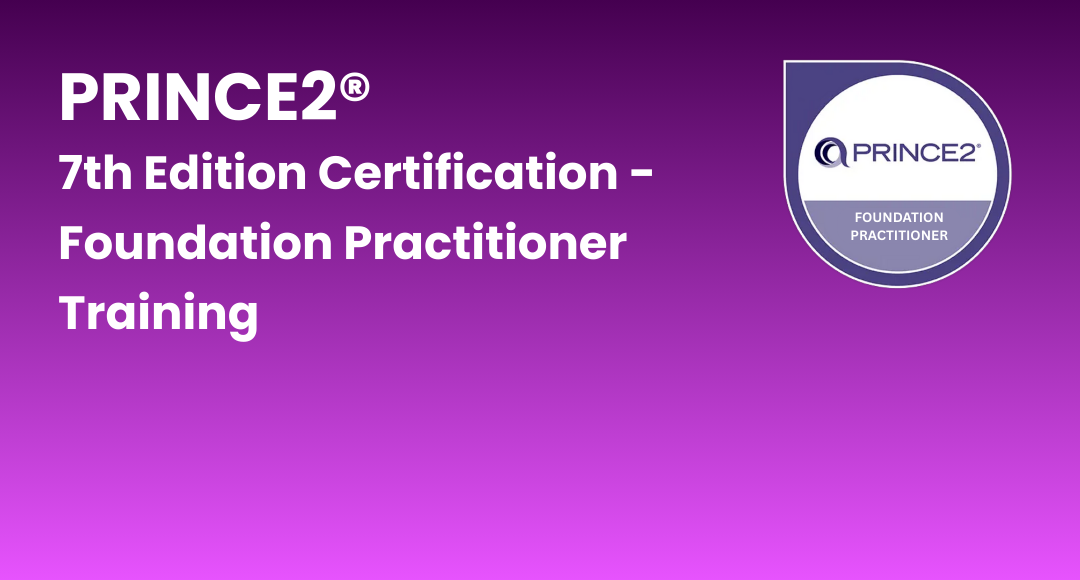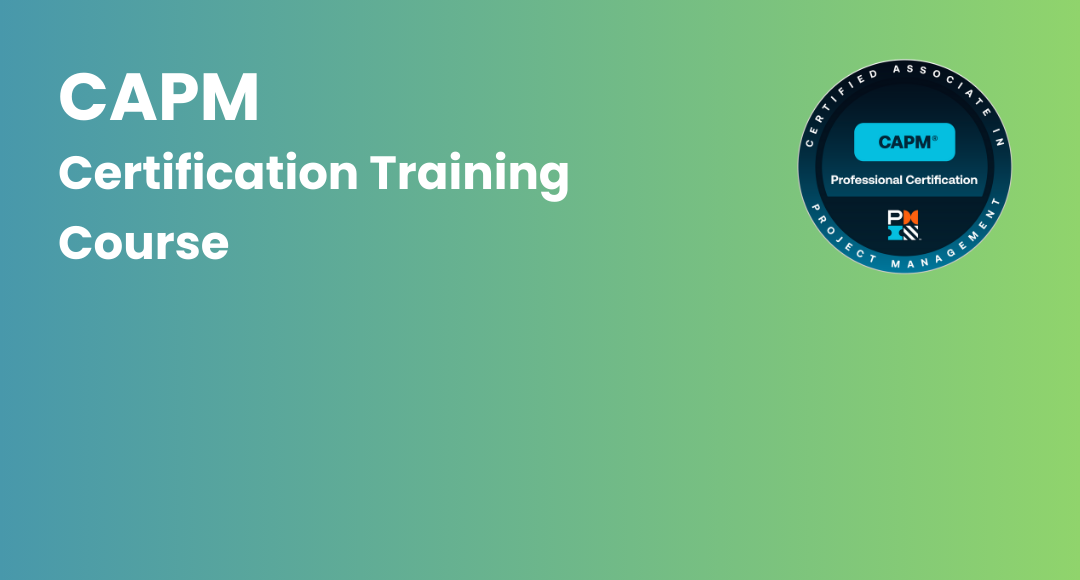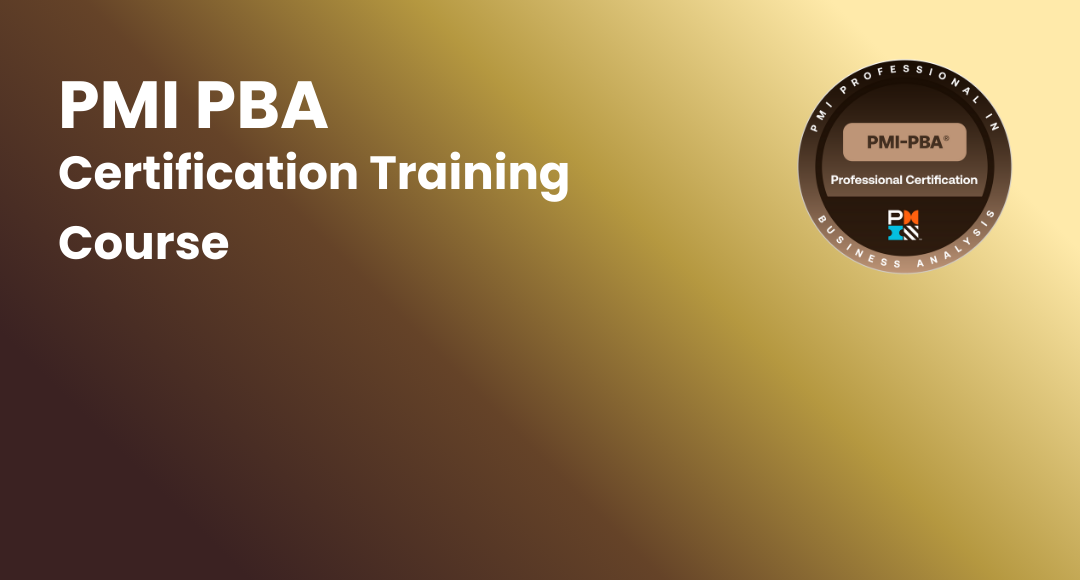Risk Management Strategies in Project Management
-
 By Aradhya Kumar
By Aradhya Kumar - Published on Dec 23 2024

Table of Contents
Introduction
Risks can be considered an opportunity, i.e., a risk that could have a negative effect on the project's objectives, or an opportunity, i.e., a risk that has positive effects on project goals, and consequently, there are a variety of ways to manage both positive and negative risks in the context of managing projects. Risk avoidance in project management is the key.
How do project managers identify risk?
The process of identifying risk during project management involves imagining all the things that could go wrong (negative risks to the project) and things that might go right (positive risks), similar to reactive and proactive risk strategies. As a guideline, consider your project's goals.
Positive risks can lead to profitable opportunities. However, only if the team working on the project prepares in a manner that is appropriate, for instance, finishing the project earlier than planned could result in more sales, but If the sales teams aren't equipped for sales, or the production teams aren't able to meet the demands, the opportunity may be missed. (Or even more damaging: your business's image and earnings could be damaged.)
Negative risks could have dire consequences. For instance, delays in the development of a product could cause sales teams to have nothing to offer, and an error in the design of the product could result in expensive recalls or litigation.
To prevent these unpleasant results, it's essential to be sure to include management and risk reduction strategies in your plan of action.
Types of Risk Management Strategies
Positive Risk Management Strategies

Now let's take a look at different types of risk management strategies that are helpful in project management.
Exploit
Exploitation is a way of creating a positive/proactive risk management strategy that can lead to an opportunity. As the manager of a project, you have allocated the right resources to make the most of this chance. This reduces the uncertainty that comes with an opportunity to take a positive risk, by ensuring that it occurs.
Share
If the team working on the project isn’t able to take advantage of the chance, they could seek out a second business to collaborate with. The experience and expertise of a different company can be leveraged to increase the benefit of the opportunity. Strategic risk examples of sharing opportunities include team-building, risk-sharing partnerships, and companies with unique purposes, as well as joint ventures. The parties involved gain according to their actions and investments.
Enhance
Enhancing means increasing the chance of the risk happening and increasing the impact. This is achieved by identifying and changing the different risk triggers. A good risk management strategy example of how to increase an opportunity is by adding resources to the project to complete it earlier.
Accept
It is about making the most of the positive risk when it occurs without actively seeking it. It's the same as having an opportunity present itself and then being accepted without much planning.
Negative Risk Management Strategies

Avoid
Avoidance reduces risk by eliminating the reason. It could lead to either not performing the activity or performing the task in a different manner. The project manager might modify or eliminate the goal that is in danger. Certain risks can be avoided by early collection of data, better communication between stakeholders, or using the expertise of others.
An example of this is an extension of the schedule or a change in the schedule. The scope of the activity Another instance could be the risk that is so risky as to be a danger that could result in death and can be avoided by closing the project completely.
The concept of risk avoidance refers to a particular kind of strategy for managing risk. It requires the use of a systematic procedure. The leaders must be aware of and evaluate the risks they face in their organisations and figure out the best way to reduce the chance of damaging the company.
Since that risk avoidance can be a calculated strategy, it is different from not being able to recognise risks or completely ignoring them.
What is the role of risk avoidance in a risk management strategy?
The management of risks is an organisational practise that starts with the three steps listed below:
Recognize threats to the business in general as well as its capital assets, earnings, and revenue.
Determine the likelihood of these dangers negatively impacting the company.
Estimate the damage that could result from the risk of a potential catastrophe—for instance, estimate the risk exposure.
The risk for organisations is varied. Some risk factors could cause massive, extensive damage to an organization; however, others can cause minor harm.
Transfer
In the risk transfer approach, the risk is transferred to a third party. The third party, which is an insurance company or vendor, is paid to assume or take care of risks on your behalf. And consequently, ownership, as well as the consequences of the risk, are carried by the third party.
The payment is known as the "risk premium." For instance, a person who purchases car insurance will be obtaining financial protection from bodily injury or physical injury that could result from traffic accidents.
Contracts are concluded to transfer the responsibility for risk to a third party.
Risk transfer cannot reduce danger; it does reduce the direct impact of risks on the projects. The tools used to transfer risk are a few, including an insurance policy or warranties, performance bonds, and guarantees, among others. This method is the most efficient in securing risks to the financial sector.
The concept of risk transfer can be described as a typical method of managing risk where the risk of losing money due to an unfortunate outcome facing an individual or an entity is transferred to an unrelated third entity. To pay this third party for taking on the risk, the person or organisation will usually make regular payments to the third party.
Mitigate
It reduces the chance of the occurrence of a risk or reduces the effect of the risk within acceptable boundaries. Risk mitigation strategies in project management strategies rely on the basic concept that the measure taken to lessen the likelihood or effect of risk is more effective than fixing the damage after the risk is triggered.
A way to reduce risk is to employ modern technology or the most effective practices to create products free of defects through risk treatment strategies.
The mitigation process may need a prototype design to assess the degree of risk. If it isn't possible to lower the risk, impact reduction can be achieved by finding the links that determine the risk's severity.
Risk Mitigation Techniques
Risk reduction requires project managers to evaluate risks by following a sequence of steps.
Find out if there are risks that could be present. Find out the likelihood of each risk's occurrence and the potential harm that should happen (risk assessment).
Decide how to handle every risk that occurs (risk response or treatment); and prioritise risk areas (high impact, medium impact, moderate impact, or low impact) to ensure you address the most pressing issues first.
Risk control strategies are applied to vary risk, from preparing funds for contingency in the event that the project's costs rise (a typical risk project managers must face) to having backup suppliers to purchase the items or services that your project may require.
Planning for risk mitigation is essential before a crisis occurs So, make sure you ask your team members for suggestions about how to mitigate the burden of any identified risks. These include new risks, risks that you are aware of, and risks you aren't aware of.
Techniques for handling risk mitigation
Accept or Assume: Acknowledge the existence of a specific risk and make a decision to accept the risk without putting in any effort to manage it. The approval of the project or programme leaders is essential.
Do not: adjust program requirements or limitations to minimize or eliminate risk. This can be accomplished through a change in the schedule, funding, or technical specifications.
Management: Implement actions to reduce the risk or potential of the danger.
Transfer: Transfer organizational accountability and responsibility to a stakeholder willing to take on the risk.
Monitor/Watch: Check the surrounding environment to detect changes that impact the nature or effect of the threat.
Accept
Acceptance implies accepting the strategic risk, particularly when no other strategy is in place to reduce the risk. Acceptance could be passive or active.
Passive acceptance does not require any other procedure other than documenting the risk and then leaving the team to handle the risk as it arises. With an active acceptance method, a contingency reserve is created to cover the loss of time, money, or other resources.
Risk acceptance isn't really an effective method of reducing risk since accepting a risk doesn't decrease its impact. But, it is an option that can be considered in a strategic risk assessment.
There are many reasons companies might opt for risk acceptance in certain circumstances.
The most frequent motive is that the costs of other financial risk management strategies, like the ability to avoid or limit risk, might surpass the expense of the risk itself. There's no point in investing $100,000 to prevent the risk of $10,000. When the expense is greater than the reward, the majority of businesses choose to accept the risk instead of spending time or money to mitigate it.
The concept of taking a risk can be called "the "do nothing" alternative. It's a common notion for those familiar with the basics of project management.
When you design your plans, be sure to consider the consequences that come with "doing absolutely nothing." This is an effective way to ensure that you're taking the correct actions, since if you think about the implications of taking the risk mitigation strategies; you'll identify the potential negative consequences and weigh them against other alternatives.
Contingent Risk Response Strategies
These strategies are in effect only in the event of certain events. The implementation of these strategies is only possible in certain predefined circumstances. The team is waiting for the right warning signals prior to the implementation of the strategies. These warning signals might not include milestones, work items, deadlines, etc.
These strategies can include the use of staffing reallocations, financial reserves, and working around the loss to limit it. Fix the damage as much as possible to avoid a repeat.
Software Tools for the Management of Project Risks
Managing risks and remaining within the guidelines of industry standards and regulations could be just as significant a problem in managing risk for projects as it is in incorporating risk management.
In some instances, using effective risk, compliance, and governance (GRC) solutions can make managing risk simpler.
Monitors your network and systems to discover weaknesses in your security that can make your company or project more vulnerable to threats and displays these on friendly colored dashboards that inform you at a glance what your weaknesses are and what you can do to address them.
If you are aiming to manage large-scale projects effectively and become an expert in project management, we have something valuable for you. Get a project management certification to improve your credibility. Enroll in the PMP Certification Training and get certified by the PMI-Project Management Institute.
Subscribe to our Newsletters
Popular Programs
CAPM® Certified Associate Project Management
Live Virtual Training
- 4.7 (962 + Ratings)
- 64k + Learners
Trending Posts
Workflow Diagram - Steps to Create, Symbols, Types, and Uses
Last updated on Mar 16 2023
Project Management vs Product Management
Last updated on May 4 2023
Top Project Manager Qualifications and Career Path in 2026
Last updated on Mar 6 2024
CAPM vs PMP – Which Project Management Certification Is Better?
Last updated on Jun 26 2023
Project Management Tips - Best of 2026
Last updated on Jul 23 2024
What is a Risk Management Plan? A Comprehensive Guide
Last updated on Mar 13 2023
Categories
- Other 69
- Agile Management 45
- Cloud Computing 56
- Project Management 172
- Big Data 66
- Business Management 88
- Digital Marketing 78
- IT Service Management 29
- Programming Language 58
- AI and Machine Learning 76
- IT Security 112
- Quality Management 78
- IT Hardware and Networking 25
- Microsoft Program 4
- Workplace Skill Building 13
- Risk Management 9
- Information Security 8
- Leadership and Management 9
- Corporate Training and Development 1
Trending Now
Issue Log in Project Management - Uses and Importance
ArticleSupply Chain Response And The Factors Involved In It
ArticleBest Agile tools for Project Managers in 2026
ArticlePMI-PMP® Exam Changes Explained in 5 Minutes
ebookProject Initiation Phase - Importance and Roles Involved
ArticleDelphi Technique and Its Role in Project Management
ArticlePMBOK Guide and Project Management Certification Updates 2026
ArticleHow to Use Google Calendar as a Project Management Tool
ebook10 Reasons Why You Should Get PRINCE2 Certification
ArticleCAPM Cheat Sheet 2026
ArticleCAPM Certification Study Guide
ArticleCAPM Certification Exam Preparation Guide 2026
ArticleTop Benefits of CAPM Certifications
ArticleGuide to Advancing Project Management Career with PMP Certification
ArticlePMP Vs PRINCE2 - Which Project Management Certification is Better?
ebookProject Management Interview Questions and Answers for Managers
ArticleProject Management Software to Use in 2026
ebookBest project management certifications in 2026
ArticleProject Feasibility Study in Seven Steps
ArticleCAPM vs PMP – Which Project Management Certification Is Better?
ArticleProject Scope Management Guide 2026
ArticleProject Management Complete Guide 2026
ArticleCAPM Exam – Difficulty, Details and Preparation Tips
ArticleWhat is Project Management?
ArticleIs it worth getting the CAPM certification?
ArticleIs PMP Better than MBA?
ebookWhat is PMI ACP certification?
ArticleIs PMP exam difficult?
ArticleIs PMI ACP worth it?
ArticlePMP or CAPM – which is better?
ArticleWhat is pass percentage for the CAPM exam?
ArticlePMP or PMI ACP – which certification should you get?
ArticlePMP Certification Cost Details
ArticleHow to get PMP certification - Guide 2026
ArticleHow to create an effective project plan
ArticleTop Project Manager Interview Questions and Answers 2026
ArticleGuide to Change Management for Organizational Transformation
ArticleResource Manager Interview Questions and Answers 2026
ArticleTop Project Manager Qualifications and Career Path in 2026
ArticleNetwork Diagram - Types, Topology and Use in Project Management
ArticleProject Management Life Cycle and Its Phases
ArticleGuide to Project Management Processes, Methodologies and Lifecycles
ArticleProcess Capability Analysis Explained
ArticleFinancial Risk and Its Types
ArticleConstruction Project Management - Roles, Stages and Benefits
ArticleProject Management Principles - 12 Essentials
ArticleProject Management Framework Guide
ArticleStrategic Management Guide 2026
ArticleProject Management Books List - Best of 2026
ArticleProject Documentation and Its Importance
ebookProject Management Tips - Best of 2026
ArticleProject Management Apps Best of 2026
ArticleDigital Project Manager – Skills, Salary, and Scope
ArticleProject Communication Plan – How to Create and Use
ArticleEarned Value Management and Its Significance
ArticlePlanning Poker Estimation Technique
ArticleProject Management vs Product Management
ArticleProject Crashing in Project Management
ArticleProject Controlling and its Importance in Project Management
ArticleProject Report and its Significance in Project Management
ArticleEstimate at Completion - Formulae and Calculations
ArticleProject Cost Management Guide 2026
ArticleProduct Lifecycle Management
ArticleProject Portfolio Management Guide
ArticleProgram Manager vs Project Manager - Comparison of Roles and Careers
ArticleWBS Dictionary - A Beginner's Guide
ArticleStakeholder Analysis and Stakeholder Management Guide
ArticleProject Management Phases Explained
ArticleProject Management Knowledge Areas
ebookLeadership Theories for Managers
ebookPMP Pass Rate in 2026 - Guide to Clear the PMP Exam
ebookProject Schedule Management Guide for Beginners
ebookProject Integration Management Guide
ArticleProject Risk Management Guide
ArticleProject Resource Management Guide
ArticleProject Quality Management Guide
ArticleProject Procurement Management Guide
ArticleProject Deliverables in Project Management
ebookConflict Resolution in Project Management
ebookPERT vs CPM in Project Management
ebookGantt Charts - The Ultimate Guide
ebookWork Breakdown Structure in Project Management
ebookTop Gantt Chart Makers in 2026
ebookGantt Chart Tools - Best of 2026
ebookHow to create a work breakdown structure
ebookProject Manager Resume Guide – Best Tips and Examples
ebookProduct Management Frameworks - The Ultimate Guide 2026
ebookProduct Planning - A Beginner's Guide
ebookWhat is Product Management? - A Beginner's Guide
ebookGuide to Project Stakeholder Management
ebookPMP® Certification Salary: Job and Salary Scope in 2026
ebookTop Project Engineer Skills
ebookGuide to Technical Project Management
ebookTop 10 project management competencies
ebookNegotiation in Project Management: The Utimate Guide
ebookTime Management in Project Management - Steps to Implement it
ebookTop Program Manager Skills of Successful Program Managers
ebookA Brief Guide to Conflict Management Approaches
ebookWhat is a Risk Management Plan? A Comprehensive Guide
ebookWorkflow Diagram - Steps to Create, Symbols, Types, and Uses
ebookBest Practices to Measure Resource Utilization
ebookWorkload Management: How to Optimize Your Team’s Workload?
ebookWhat is Project Execution? A Comprehensive Guide
ebookProject vs Program Management: Key Differences
ebookKanban Methodology in Project Management – A Complete Guide
ebookHybrid Project Management Guide 2026
ebookProject Characteristics: Key Elements in a Project
ebookThe Ultimate Guide to the Waterfall Methodology in Project Management
ebookProject Budget: Definition, Overview & How to Create One
ebookThe Ultimate Project Kickoff Meeting Guide
ebookProject Timeline: How to Build One, Definitions, and Examples
ebookProject Scope Statement: How to Write One With Example
ebookStatement of Work in Project Management Guide 2026
ebookProject Management in Product Development : Essential Role
ebook10 Best Change Management Tools to Use
ebookMastering Resource Scheduling to Unlock Project Success
ebookProject Risk Analysis: Tools, Templates & Best Practices
ebookHow to Write a Project Summary: Four Easy Steps
ebookTop Leadership Skills: Mastering the Art of Effective Leadership
ebookHow to Write a Project Descriptions: A Step-by-Step Guide
ebookWhat is Project Monitoring? A Comprehensive Guide
ebookWhat Are Project Fundamentals? A Quick Guide
ebookKanban Board: A Detailed Guide to Understanding and Usage
ebook10 Effective Management Styles for Leaders (With Real-Life Examples)
ebookProduct Manager Career Path: What to Expect
ArticleCareer Path for Program Manager - Strategic Navigation for Professional Growth
ebookExploring Career Path for Product Owner
ebookAn Ultimate Guide to Project Coordinator Career Paths
ebookHow to Become an ISO 21502 Lead Project Manager
ArticleWhat are the Basics of ISO 21502 Foundation? A Brief Guide
ebookThe Role and Responsibilities of an ISO 20400 Lead Manager
ArticleEnergy Saving Standards and ISO 50001 Best Practices
ebookComparing Different ISO Certifications for Project and Energy Management
ebookGuide to ISO Certifications for Effective Project and Energy Management
ArticleWhy ISO 50001 is the Perfect Match for Energy Efficiency?
ArticleAI Tools for Project Managers: A Game Changer for Project Success
ArticleAbout Disney’s Project Management: Where Magic Gets Real
ArticleMcDonald's Recipe to Success - A Perfect Project Management Case Study
ArticleToyota’s Project Management: A Road to Greatness and Innovation
ArticleNetflix's Binge-Worthy Project Management
ebookUnder Armour’s Project Management Approach
ArticleWipro Project Management: Core Lessons from Tech Giant
ArticleProject Management at Google: Tools and Success Stories
ArticleCoca-Cola Project Management Strategy and Key Insights
ArticleAI in Project Management: Transforming the Future of Work
ArticleBehind the Scenes: How Apple Executes Projects with Flawless Precision
ArticleTesla's Advanced Project Management: Accelerating the Future
ArticleBeats to Business: Spotify's Project Management to Redefine Music
ArticleTop AI Project Management Software to Elevate Your Workflow
ArticleProject Management Office: Step-by-Step Guide to Start a PMO
ArticleWhat is a Project Management Information System?
ArticleHow Microsoft Balances Innovation and Project Management?
ArticleWhat is Agile Project Management? A Beginners Guide
ArticleIKEA Project Management: What to Learn and Stay Competitive
ArticleHow Did Nike Become a Global Leader?
ArticleIntel's Master Project Management Formula
ArticleSamsung Pioneer in Project Management: The Secret Behind It
ArticleAmazon Logistics Strategies That Dominate Retail
ArticleRemote Project Management Success: Key Strategies and Career Opportunities
ArticleStreamlining Workflows: The Best Digital Tools for Professionals
ArticleUnderstanding the Financial Risks in Sponsorships and How to Avoid Them
Article3 Real Disasters That Teach Critical Project Risk Planning Lessons
ArticleInterview scheduling automation: Streamlining the candidate experience
Article3 Quality Gaps That Can Ruin Your Project Outcomes
ArticleBest 4 Construction Drawing Management Tools to Boost On-Site Efficiency
ArticleEssential Jira Interview Questions for 2026
ArticleProduct Development Cycles That Keep Innovation on Schedule
ArticleSmarter Projects with AI
ArticleLegal Project Management for PMs: A Practical Starter Guide
ArticleProject Manager Job Description: Roles, Responsibilities, and Skills
ArticleProduct Analyst Job Description – Key Duties and Career Path
Article
